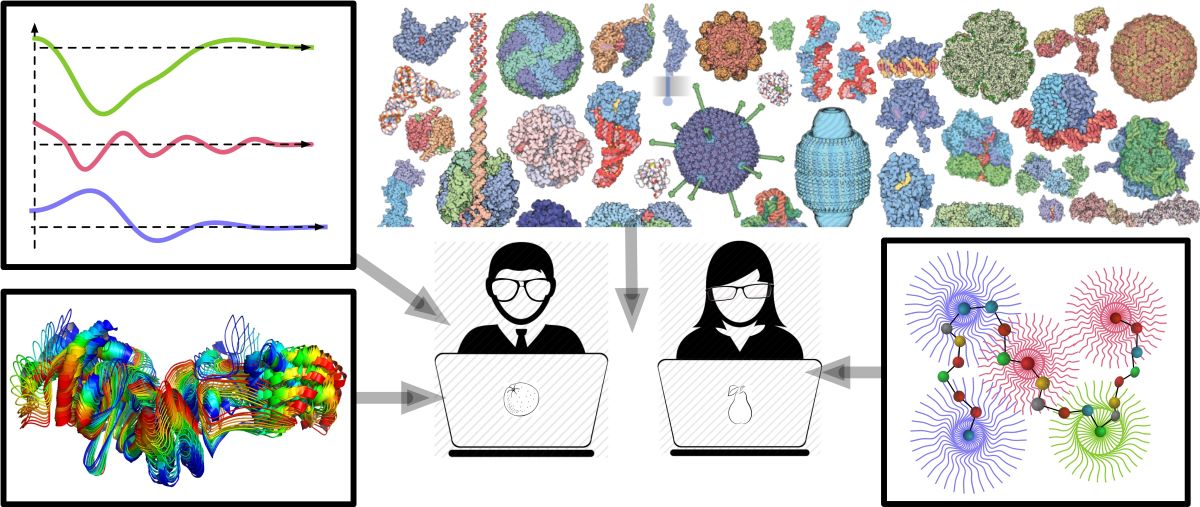Speaker
Description
The human IgG2 (hIgG2) isotype is unique in its ability to undergo redox based shuffling of its hinge disulfides. Previous work identified hIgG2 as the optimal isotype for mediating activation (agonism) of multiple tumour necrosis factor receptor superfamily (TNFRSF) members, with the hinge disulfides shown to be critical. CD40 is a co-stimulatory TNFRSF receptor that can be targeted using immunostimulatory monoclonal antibodies (mAb) and is of interest for cancer immunotherapy [1].
Using, the clinically relevant anti-CD40 mAb chiLOB7/4, we previously generated a series of cysteine to serine mutation hinge variants that exhibited activities spanning the agonism/antagonism spectrum [2]. To elucidate the mechanisms underlying these activities, a combination of molecular and structural biology along with simulations were utilised [3].
X-ray crystallography was used to determine the structures of the variants of interest, with sulfur-SAD used to confirm the positions of the disulfide bonds in the hinge. It was revealed that disulfide bonds linking opposing heavy chains (‘cross-overs’) were present in agonistic variants, while a more typical ladder-like topology was observed in the non-agonistic variants. Restrictions imposed by the crystal lattice prevented investigation of the dynamics of the different variants, leading to solution state techniques being used.
Small-angle X-ray scattering (SAXS) experiments revealed that the agonistic variants were conformationally restricted in solution when compared to the non-agonistic variants, which were more flexible and elongated. To bridge the gap between the atomic detail from the crystallographic information and the dynamic information inherent in SAXS, molecular dynamics (MD) and enhanced sampling simulations were used.
MD and metadynamics simulations were used to further characterise the underlying mechanism behind the conformational restriction. SAXS-based reweighting of the conformational pool generated by MD revealed a clear trend of conformational restriction that correlated with increased agonism. Principal component analysis of the MD simulations identified the F(ab)2 hinge bending and torsion angles as being key global motions that differed between agonistic and non-agonistic variants. These motions were then taken into metadynamics simulations as collective variables (CVs) to allow for enhanced sampling of these motions. Reconstructions of the free-energy surfaces for these CVs reveal restrictions in the accessible conformational space that correlate with increasing agonism.
These insights reveal that regulation of mAb conformation and flexibility as a key mechanism by which modulation of agonism can be achieved. Future work aims to investigate if this mechanism of modulation is more broadly applicable to other members of the TNFRSF or other receptor families and if further restriction of flexibility can deliver improved agonism.
References:
[1] Remer M, White A, Glennie M, Al-Shamkhani A, Johnson. P. (2017) The Use of Anti-CD40 mAb in Cancer. Curr Top Microbiol Immunol. 405:165-207.
[2] White, A. L., Chan, H. T. C., French, R. R., Willoughby, J., Mockridge, C. I., Roghanian, A., Penfold, C. A., Booth, S. G., Dodhy, A., Polak, M. E., Potter, E. A., Ardern-Jones, M. R., Verbeek, J. S., Johnson, P. W. M., Al-Shamkhani, A., Cragg, M. S., Beers, S. A., Glennie, M. J. (2015) Conformation of the Human Immunoglobulin G2 Hinge Imparts Superagonistic Properties to Immunostimulatory Anticancer Antibodies. Cancer Cell 27, 138-148.
[3] Orr, C. M., Fisher, H., Yu, X., Chan, C. H., Gao, Y., Duriez, P. J., Booth, S. G., Elliott, I., Inzhelevskaya, T., Mockridge, C. I., Penfold, C. A., Wagner, A., Glennie, M. J., White, A. L., Essex, J. W., Pearson, A. R., Cragg, M. S., Tews, I. (2022) Hinge disulfides in human IgG2 CD40 antibodies modulate receptor signaling by regulation of conformation and flexibility. Sci. Immunol. 7.
Hayden Fisher (1,2,3,4), Christian M Orr (2,3,7), Xiaojie Yu (2), Claude HT Chan (2), Isabel Elliott (2,3,4), Christine A. Penfold (2), Patrick J. Duriez (2,5), Tatyana Inzhelevskaya (2), C. Ian Mockridge (2), Mark D. Tully (1), Jonathan W. Essex (4,6), Mark S. Cragg (2,6), Ivo Tews (3,6).
(1) European Synchrotron Radiation Facility, Grenoble, 38000, FR.
(2) University of Southampton, School of Cancer Sciences, Centre for Cancer Immunology; Southampton, SO16 6YD, UK.
(3) University of Southampton, School of Biological Sciences; Southampton SO17 1BJ, UK.
(4) University of Southampton, School of Chemistry; Southampton SO17 1BJ, UK.
(5) University of Southampton, School of Cancer Sciences, CRUK Protein Core Facility; Southampton, SO16 6YD, UK.
(6) University of Southampton, Institute for Life Sciences; Southampton SO17 1BJ, UK.
(7) Diamond Light Source; Didcot, OX11 0FA, UK.
| Submitting to: | Integrative Computational Biology workshop |
|---|

